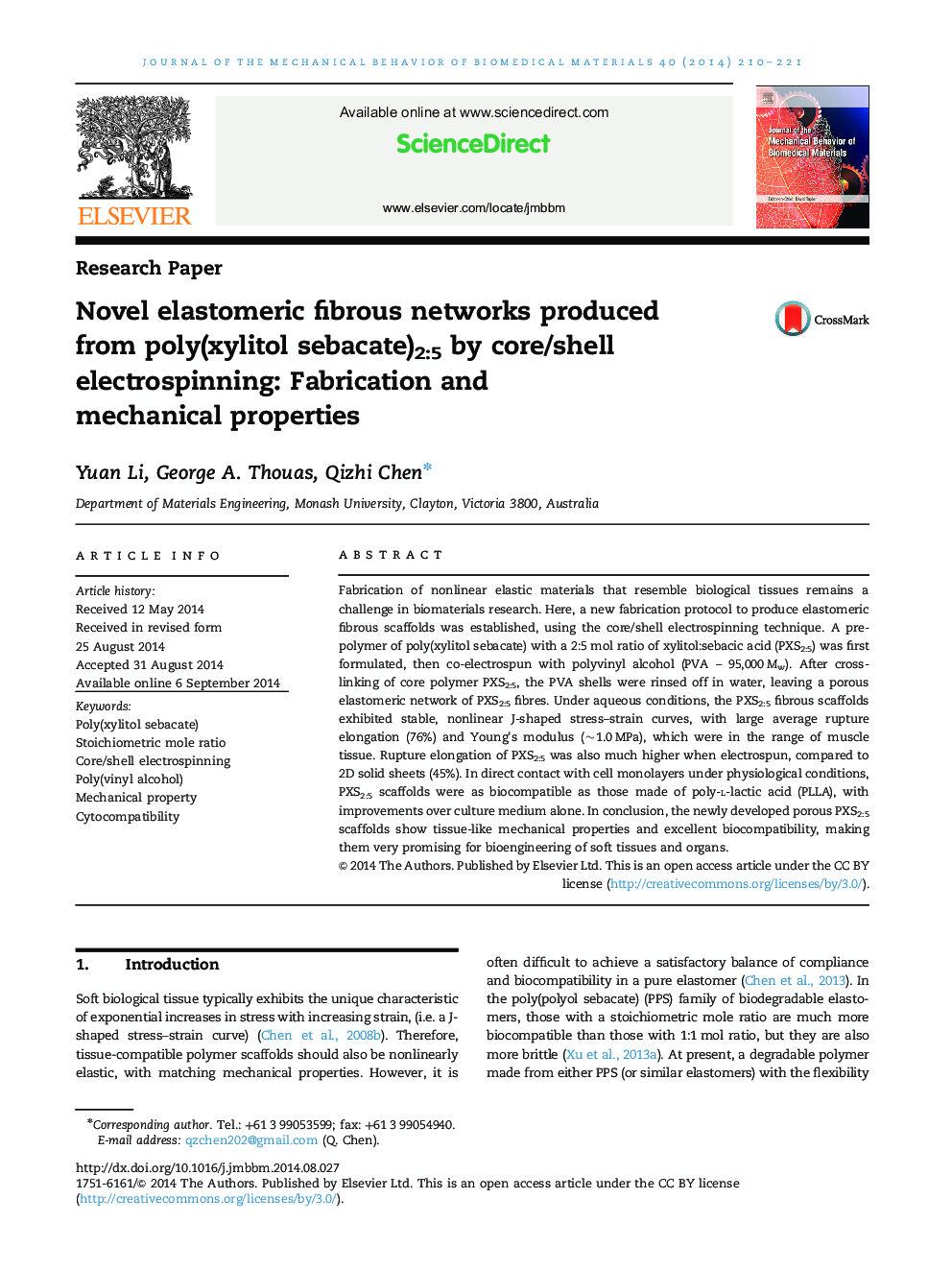| Article ID | Journal | Published Year | Pages | File Type |
|---|---|---|---|---|
| 7208679 | Journal of the Mechanical Behavior of Biomedical Materials | 2014 | 12 Pages |
Abstract
Fabrication of nonlinear elastic materials that resemble biological tissues remains a challenge in biomaterials research. Here, a new fabrication protocol to produce elastomeric fibrous scaffolds was established, using the core/shell electrospinning technique. A prepolymer of poly(xylitol sebacate) with a 2:5 mol ratio of xylitol:sebacic acid (PXS2:5) was first formulated, then co-electrospun with polyvinyl alcohol (PVA - 95,000 Mw). After cross-linking of core polymer PXS2:5, the PVA shells were rinsed off in water, leaving a porous elastomeric network of PXS2:5 fibres. Under aqueous conditions, the PXS2:5 fibrous scaffolds exhibited stable, nonlinear J-shaped stress-strain curves, with large average rupture elongation (76%) and Young׳s modulus (~1.0 MPa), which were in the range of muscle tissue. Rupture elongation of PXS2:5 was also much higher when electrospun, compared to 2D solid sheets (45%). In direct contact with cell monolayers under physiological conditions, PXS2:5 scaffolds were as biocompatible as those made of poly-l-lactic acid (PLLA), with improvements over culture medium alone. In conclusion, the newly developed porous PXS2:5 scaffolds show tissue-like mechanical properties and excellent biocompatibility, making them very promising for bioengineering of soft tissues and organs.
Related Topics
Physical Sciences and Engineering
Engineering
Biomedical Engineering
Authors
Yuan Li, George A. Thouas, Qizhi Chen,
